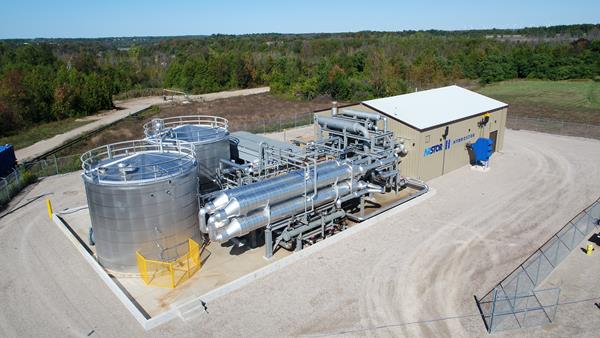
In an exclusive Guest Blog, Justin Rangooni, executive director of Energy Storage Canada, explains why hitting the country’s 2050 net zero target will be impossible without at least 8GW of energy storage by 2035.
When we talk about decarbonising Canadian electricity, we tend to focus on how it’s generated. How can we cost effectively expand hydropower capacity? Where are solar panels and wind turbines best located? How can we fully capture the potential of new fuels such as hydrogen and ammonia?
Enjoy 12 months of exclusive analysis
- Regular insight and analysis of the industry’s biggest developments
- In-depth interviews with the industry’s leading figures
- Annual digital subscription to the PV Tech Power journal
- Discounts on Solar Media’s portfolio of events, in-person and virtual
All vital questions, to be sure.
But no matter how effectively we develop our green generation options, we’re likely to fall short of our net-zero carbon ambition unless we knit the whole system together – and incorporate the ability to even out the variations in supply and demand – through a large-scale build-out of diverse forms of energy storage.
For the first time the scope of that build-out has been quantified, in a report recently commissioned by Energy Storage Canada. The report provides an estimate of the installed capacity of energy storage required, province by province, to optimally supplement green electricity sources and carry Canada over the net zero finish line.
And it’s a significant amount – in the range of 8 to 12 gigawatts nationally by 2035. Even at the low-end, that’s equivalent to Manitoba’s entire installed generating capacity as of 2020.
And while energy storage is already on a healthy growth trajectory with recent announcements in Ontario and Nova Scotia, national installed capacity today is less than 1 gigawatt, meaning we have a big gap to close.
But we need to close it if we are going to successfully realise the dual imperatives of meeting more of our energy end-use needs with electricity, and of enlarging the proportion of that electricity that comes from renewables and other non-emitting resources.
Even basic regulatory definitions are still missing
Each province has its own unique electricity supply mix and will follow its own path to net zero.
But the versatility of energy storage technologies will play a critical role in meeting electricity needs in all provinces, through maximising the efficiency and ability of existing and new generation, transmission, and distribution infrastructure. And providing potentially significant cost savings for customers.
Hydroelectric storage reservoirs, for example, can be used to level out supply to urban centres and capacity-constrained areas, without incurring the cost of transmission systems upgrades.
Additionally, energy storage will be instrumental in addressing the intermittent nature of wind and solar generation. And when paired with nuclear generation, energy storage can allow for more consistent and cost-effective production, decoupled from the vagaries of hour-by-hour demand.
Energy storage resources are a versatile, robust, and evolving group of technologies that offer a range of stability enhancing services to electricity systems, extending beyond the essential benefit of flexible capacity.
For instance, long-term storage options, with the ability to smooth out demand shifts over multiple days, will become more important as we drive fossil-fuel generation down to even lower levels.
But to fully unlock the value that energy storage can provide, policy makers and government agencies need to coordinate a revamp of the entire regulatory and legislative framework to include and accommodate energy storage.
Essential as energy storage is to our net zero future, it simply was not a consideration in the relatively distant past when our electricity regulatory frameworks were created.
Currently, we lack even basic regulatory definitions of energy storage in some provinces, as well as clear expectations and processes relating to the crucial issues of project siting and inter-connections with electricity grids.
Provincial power system planning and procurement approaches must also evolve to ensure pricing and other investment incentives reflect both the unique reality of energy storage deployment, and the scope of the savings and other benefits that energy storage can provide.
The variety and versatility of energy storage resources make them a critical component of a net zero electricity grid – a component without which Canada will not reach its net zero goals.
Download the report by Power Advisory for Energy Storage Canada, ‘Energy Storage: A Key Net Zero Pathway in Canada’ here.

